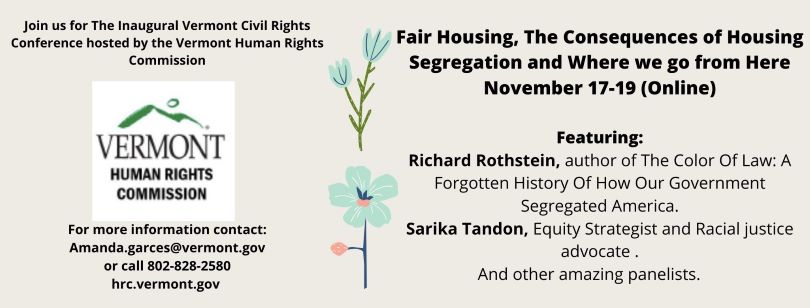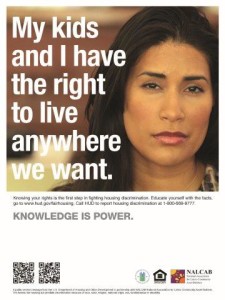The Vermont Human Rights Commission is hosting the inaugural Vermont Civil Rights Conference on November 17-19, 2020. This year’s conference is focused on the theme of Fair Housing: The Consequences of Housing Segregation and Where we go From Here.

This three-day conference is free and open to the public, and features Richard Rothstein, author of The Color of Law, and Sarika Tandon, Equity Strategist and Racial Justice advocate.
Richard Rothstein is an American academic and author affiliated with the Economic Policy Institute, and a senior fellow, emeritus at the Thurgood Marshall Institute of the NAACP Legal Defense Fund. His current research focuses on the history of segregation in the United States with regards to education and housing, and he is most recently recognized for authoring The Color of Law. We’ve called on the expertise of Richard Rothstein many times in our Thriving Communities blog, most recently highlighting his Op-Ed in the New York Times here.
Sarika Tandon is an equity strategist and racial justice advocate. She consults, teaches, writes, researches, and collaborates at the intersection of race, equity, and environmental issues. Sarika is deeply committed to working within the environmental movement to address issues of racial and environmental injustice and to support the inherent power, brilliance, and well-being of communities of color. She also supports racial equity in nonprofit, education, criminal justice reform, and cultural spheres.
Other workshops include, “Housing Barriers in Vermont: Community Challenges & Collective Solutions – Moving the work forward collectively,” “Vermont’s Housing Crisis: State’s Consolidated Plan – What are we doing about it?” “Fair Housing Act: Critiques and Implications” and “Community Reflections on the Consequences of Housing Segregation and Where we go from Here.” Panelists include representatives from various housing and support organizations, state government, and fair housing advocates – including the CVOEO Fair Housing Project.
All community members are welcome to join. Please see below for additional information about the conference.
Register in advance: https://us02web.zoom.us/meeting/register/tZYtdOyqqzoqHtF6v3iTob9QIcRSvRLnuAux
After registering, you will receive a confirmation email containing information about joining the meeting.
The Vermont Human Rights Commission works to promote full civil and human rights in Vermont by enforcing laws and providing education around equal access to housing, places of public accommodation, and in state government employment. The Commission protects people from unlawful discrimination in housing, state government employment, and public accommodations. Learn more about the VHRC’s at https://hrc.vermont.gov/.
